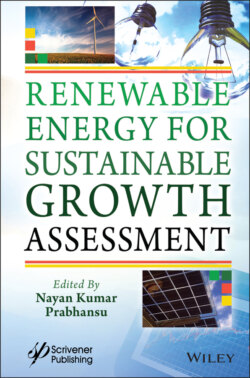Читать книгу Renewable Energy for Sustainable Growth Assessment - Группа авторов - Страница 99
3.3.2.3.5.1 Pre-treatment and Saccharification
ОглавлениеAcid and alkaline pre-treatment are the chemical compounds that have the potential to hydrolyze lignocellulosic biomass efficiently [92]. Alkaline pre-treatments raise the crystallinity of cellulose rather than the acidic pretreatment. Both pre-treatments release phenolic content; the maximum is with acid pre-treatments [102]. Combined pre-treatment with hydrothermal treatment and Fenton treatment efficiently facilitates the enzymatic hydrolysis of lignocellulosic biomass [103]. Mild O2-aided alkaline pre-treatment enhances structures fractional quality and enzymatic hydrolysis of biomass. Compared to traditional alkaline pre-treatment, more than 80% lignin and 92% cellulose at 80 °C and with 1% dilute NaOH extracted via O2-aided alkaline pre-treatment [104]. Xu et al. [105] demonstrated that choline chloride has significant efficacy in the pre-treatment of lignocellulosic biomass. Acidic hydrothermal pre-treatment with O2 effect on redox environment results in increased intensity, lower recovery of pre-treatment solids, lower recovery of glucans, better elimination of hemicellulose, pseudo-lignin production, improved total conversion of glucans, and increased concentrations of many microbial inhibitors [106]. The most successful pre-treatment process providing the shortest pre-treatment period relative to anoxia and alkali pre-treatment was ultrasonic pre-treatment for releasing microbial cells from WAS (waste-activated sludge) flocs and subsequent phagotrophic algae development. Ultrasonic pre-treatment was accomplished predominantly by breaking physical attracting forces, while the liberation of microbial cells was performed by breaking ionic bonds in alkali pre-treatment [107]. They were also stated that during algae formation, re-flocation of released microbial cells was observed in ultrasonic pre-treatment but was less resistant to floc reform in alkali pre-treatment.
Microwave-assisted (MW) pre-treatment compared to ultrasound is superior for removing hemicellulose [108]. A hydrolysate without any inhibitors and maximum reducing sugar at low solid loading is obtained even under moderate MW pre-treatment conditions. They have revealed that these factors had no significant effect on the ultrasound-pretreated agave. Compared to pre-treatment with traditional heating, pre-treatment assisted with MW decrease the method’s time and temperature. Enzymatic pre-treatment with protease, viscozyme, and enzyme blend pre-treatment at 55 °C shows maximum saccharification. Preliminary economic evaluation findings revealed that the essential enzymes’ expense makes enzymatic pre-treatment not yet commercially feasible [109]. The generation of low-cost enzymes, however, could promote the use of enzymes in microalgae pre-treatment. The cheapest method for cellulose saccharification and co-fermentation of all reducing sugars, including pentose and hexose sugars with engineered microorganisms, was also in proceedings for the effective ethanol development of efficient pre-treatment technologies [31].
